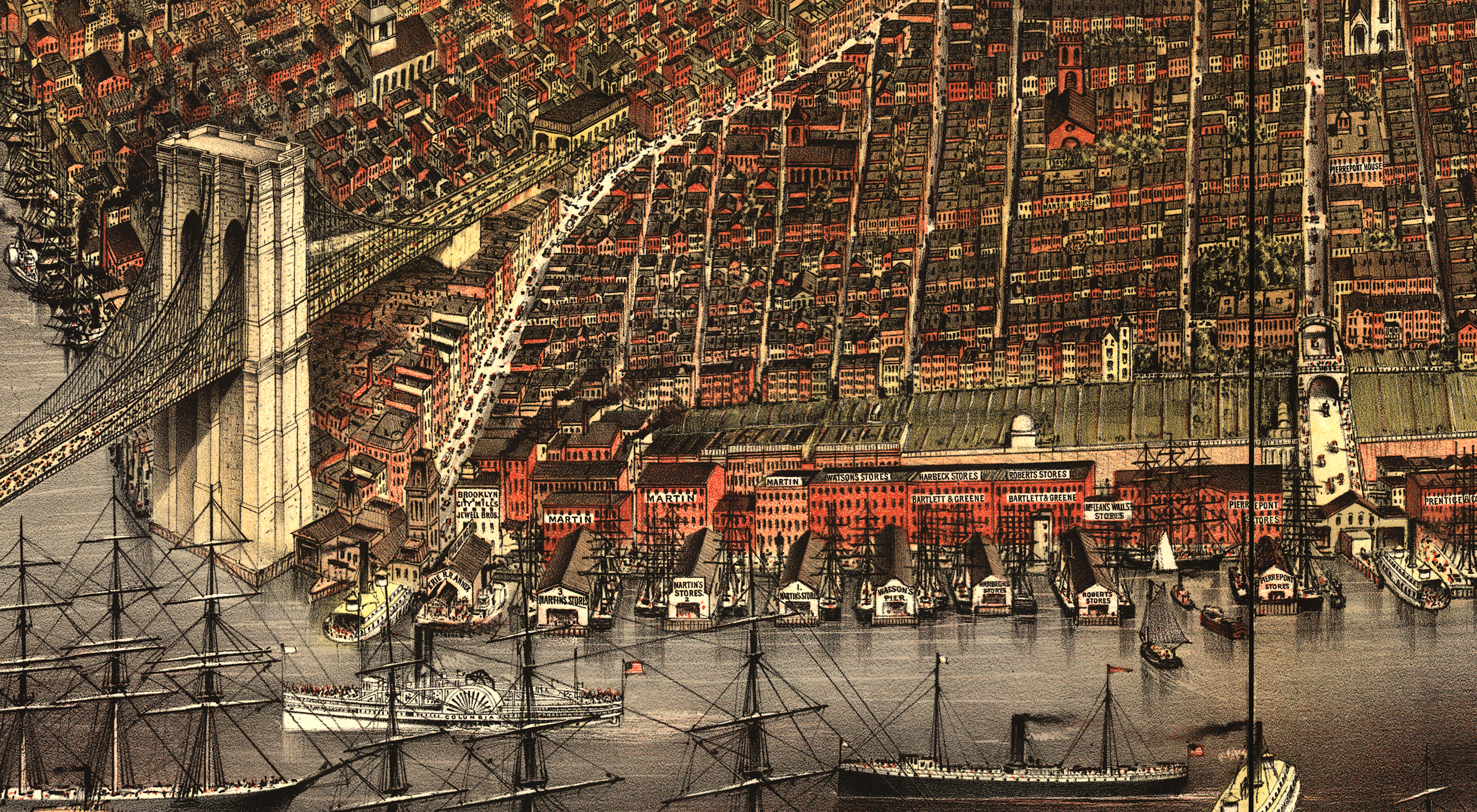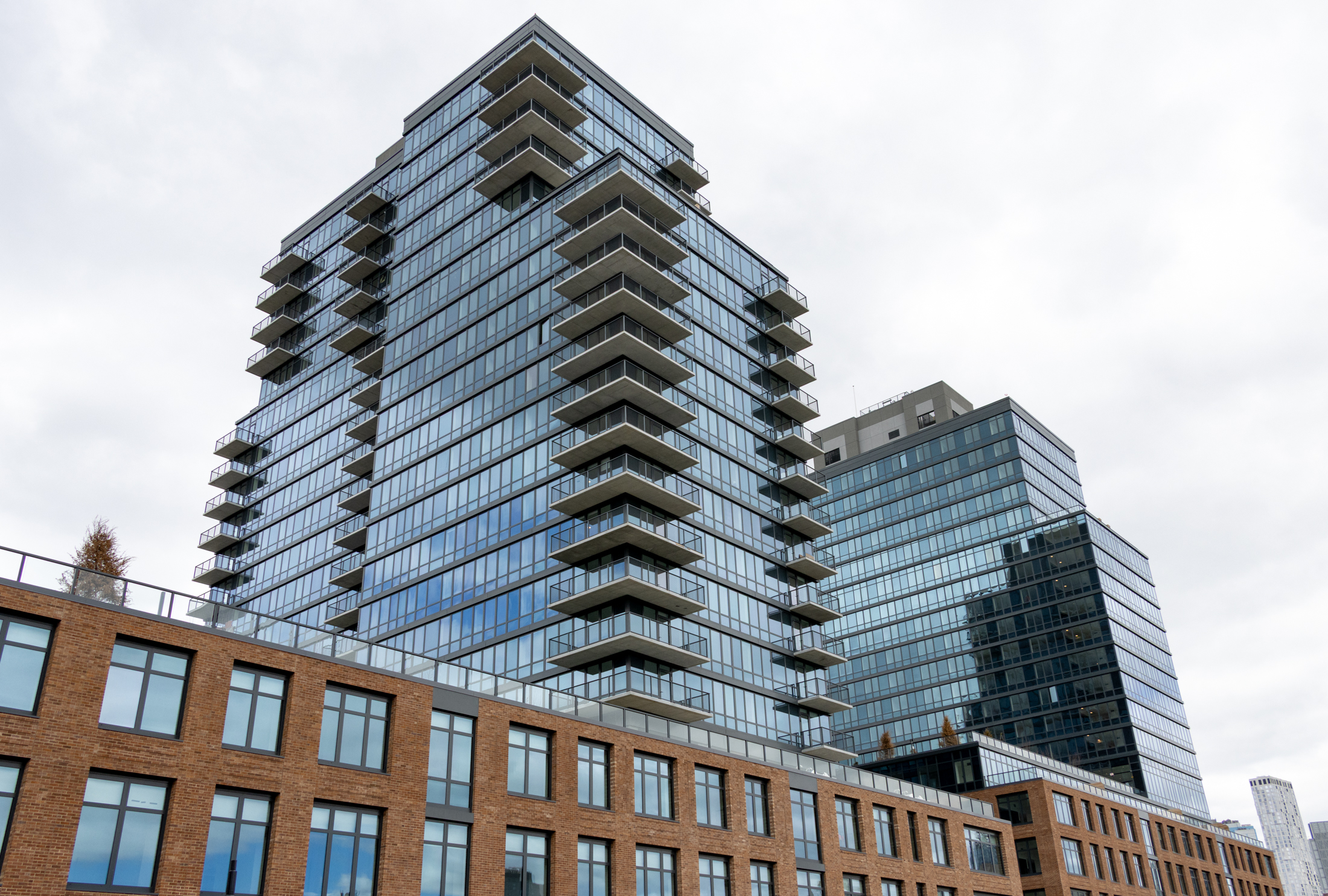Admiral's Row: The Projected Costs of Preservation
Another little birdie emailed us with some of the costs that the consultants hired by the Feds are projecting for restoring the Admiral’s Row houses. As you can see from the chart, there were some later additions to the original 19th Century houses that are generally in worse condition and not considered worth saving, hence…



Another little birdie emailed us with some of the costs that the consultants hired by the Feds are projecting for restoring the Admiral’s Row houses. As you can see from the chart, there were some later additions to the original 19th Century houses that are generally in worse condition and not considered worth saving, hence the two square footage numbers. The Rehabilitation numbers refer to restoring what’s currently there, bringing existing details back to life and replicating missing portions; The Reconstruction numbers refer to a scenario in which remaining details are salvaged and incorporated into newly-constructed replicas. In addition to being cheaper, the Rehab approach sounds preferable to us. How do these numbers look to you?
Admiral’s Row: “Extremely High Level of Historic Integrity” [Brownstoner]
Officers’ Row: Let’s Have Our Cake and Eat It Too [Brownstoner]
Officers’ Row Preservation Coming to a Contentious Head [Brownstoner]
For Officer’s Row, Supermarket All But Certain [Brownstoner]
Admiral’s Row Fixup to Cost $20M [NY Daily News]
Real Estate Round-Up [Brooklyn Eagle]





Preservationista,
We seem to be talking past eachother this whole week, and I think I just figured out why. You believe that whenver the right vision is put forth, the financing is found. As someone who has worked on many master plans, and has been involved in similar types of project from the ground up, I can tell you that this is just not so.
The dreaming of big dreams is a necessary and exciting first step in order to improve the urban fabric of our beloved city and borough, however there is a crucial step 2 and that is turning those dreams and big plans into reality. In alot of ways, step 2 is a much more difficult step. The vast majority of great plans die in step 2. Wonderful plans that would have made our City much more pleasant have died because of pedestrian concerns like funding sources, engineering concerns, or labor shortages. This is a bit unscientific, but I would say that fewer than 20% of extremely worthy visions make it past this step.
Getting a project past this step is difficult, costly and extremely time consuming – so after a while, you start to get a good feel for what visions have half a chance of making it past step 2 and which ones ones are dead on arrival. Those feelings are based on tons of research and actual work and life experience. Based on that, I can assure you the grand visions being put forth here, while inspiring, are not even close making it through step 2. To say that if an idea is beautiful enough the money will be found is naive, and quite frankly, insulting to those who spend way more time and effort than you do in order to make them happen.
Sorry if you find this insulting, but it’s the truth.
Ella
“There are those who look at things the way they are, and ask why… I dream of things that never were, and ask why not?”
Robert Kennedy
S’ok, Ella. You just don’t get it, either. If we don’t dream big, we shouldn’t be surprised when we don’t get anything big.
When matters of high commerce are discussed, ie, the AY’s of the world, money is always found. Deals are made, tax incentives are proposed; investors, financial angels, venture capitalists come out of the woodwork. Once the powers that be decide to do something, it gets done.
Obviously, that will, or grand master plan, to truly remake and preserve the Navy Yard, is not there. Whether it’s because the BNY has tried, and is tired of trying, or they just don’t have any vision, or they simply want something else – hey, I don’t know. I’m just a single opinionated citizen of Brooklyn writing on a blog, interested because I care about the preservation of the historic sites in my town.
So do me a favor, Ella. The next time an opinion is offered, the next time a back of an envelope sketch by a distinguished professor is displayed, the next time a seasoned professional tosses out some numbers, don’t just assume it is the work of idiots, dreamers or fools. How about the common curtesy of a civilized discussion, free of condescension, ridicule, or dismissal? If you are in a professional position to have some info and insight the rest of us don’t, it can be imparted in such a way that does not belittle or try to degrade those who may speak without that insight.
Long story, long, work on those people skills. It will go a long way to helping you better succeed with this or anything else. I may be as wrong as wrong can be about everything at the Navy Yard, but I will always continue to imagine something greater than only a bottom line. Imagination can become reality. It happens quite a lot, and could happen here. You never know.
Happy Holidays
Preservationista
No way you get $20 per square foot; more like $15.
Minor quibble 7:47. The Lefferts Homestead was moved from Flatbush, not Crown Heights [Flatbush Ave., bet . Maple & Midwood Streets] in 1918, after being donated to the City by the Lefferts family. More important,–even if the Lefferts House IS more historically significant [and IMO it is] that in no way speaks to the preservation of the buildings beong discussed here.
Shahn,
Never met you, though I was there Tuesday night. One of the people at the Navy Yard desk told me that you were spouting that number.
Your numbers are interesting, but they leave out a ton of costs and underestimate others.
Preservationista, you paint a beautiful picture. Really – I think Brooklyn would be a a much better place if the development you described happened. What you fail to realize is that it’s incredibly easy to think up those kinds of scenarios – it’s incredibly hard to make them happen in the real world. If you’re going to waive off funding concerns as a “red herring” you lose all credibility. I no longer feel the need to respond to your comments. You’ve just proved my point about your comments better than anything I could ever say would.
-Ella
Ella, nowhere on this blog did I mention a price of $500,000 per building to rehabilitate Admirals Row. On the previous posting about this subject, you accused me of being a “huckster” for using that number. The only place I mentioned that price was during an off-the-cuff conversation with a developer with strong ties to the Navy Yard at the meeting the other night. This makes it very clear to me who you are any why you have such an antagonistic view of those who wish to preserve these buildings. If you wish to remain anonymous on a blog, you probably shouldn’t use information from an offline conversation and post it anonymously as if everyone else was was part of that conversation.
For the record, the $500,000 price estimate I mentioned to you was based on what I paid recently to restore a 4000 square foot townhouse in this neighborhood that was a rotting piece of shit when I bought it. It’s the prerogative of your anonymous supporters to feel that my occasional use of colorful language makes my arguments less credible, but I’d suggest that both of you take some of your hard earned dollars to buy a box of Crayolas so that you can open up your color palette and stop thinking only in black and white.
I believe from my personal experience rehabilitating 19th century buildings that Admirals Row can rehabbed for $200 a square foot for hard costs. I admit that I am using only my knowledge of what it has cost me to rehab buildings as a guide to what I think it would cost. I am completely inexperienced when it comes to figuring out how to spend $500 – $600 a square foot on a rehabilitation project. I will have to learn how to increase either my costs of doing business or my profit margin to get anywhere near that.
Here is one way to break down the numbers of rehabbing the Admirals Row houses:
Hard costs to renovate: 47,411 sq. ft. x $200 a sq. ft. = $9,482,200
Soft cost estimate: $9,482,200 x 20% = $1,896,440
Total project costs: $11,378,640
Income from rents: 47,411 @ $20 a square foot = $948,220
Expense estimate: $948,220 x 10% = $853,398 Net Operating Income
With a Net Operating Income of $853,398 these properties are worth $12,191,400 at a 7% CAP rate, and $14,223,300 at a 6% CAP rate. I’ve seen a lot of buildings recently selling at even lower CAP rates, but even at these numbers the project would make money and make sense.
7:47: You’re missing the point. I’m not comparing the historical importance of the Lefferts House to Admiral’s Row. The point is that, if preserved, they can be an inviting AND useful addition to the existing community. They can be both visually exciting AND productive for the local population (not impending yuppies). This has been an argument against their preservation on theses threads, and it’s not valid.
its the collection of them toghther, in the context of the Navy Yard (going back pre-revolution as a historical site) and the Commandants house round the corner) that make it spesh.
The Lefferts homestead is a magnificent 18th century farmstead built by one of the most prominent colonial families in Brooklyn. Even back in the 1920’s, its importance was appreciated, which is why it was moved from its original location in Crown Heights to Prospect Park. It is a house museum and a great one.
The houses along Flushing Avenue are boring by comparison, especially the ones that were dormitories. There is no comparison.
These are not great buildings. Why do people have it in their heads that these perfectly ordinary and banal old navy houses are so special?